Tools for PFAS Site Characterization: Session III - Standards, Passive Sampling, and Modeling of PFAS
Sponsored by: The NIEHS Superfund Research Program (SRP)
The NIEHS Superfund Research Program (SRP) is sponsoring a Risk e-Learning webinar series, hosted by CLU-IN, focused on research efforts to develop tools for sampling, monitoring, detecting, and characterizing per- and polyfluoroalkyl substances (PFAS) contamination.
The three-part series will feature SRP-funded researchers and collaborators whose research focuses, in part, on understanding the distribution and fate of PFAS in the environment.
The final session in this series will include federal and SRP researchers featuring useful resources that can aid in site characterization, such as PFAS reference materials, libraries, and passive samplers.
To learn about and register for the other sessions in this webinar series, please see the SRP website.
Jessica Reiner, Ph.D., of the National Institute of Standards and Technology (NIST) will present on work being done focused on creating reference materials for quality assurance and quality control of measurements pertaining to organic pollutants in environmental and human matrices. NIST reference materials are produced to be homogeneous, stable, and with SI-traceable quantitate values for individual organic compounds. The class of organic contaminants per- and polyfluoroalkyl substances (PFAS) present measurement challenges to the analytical community that potentially affect the accuracy and precision of quantitative measurements. This presentation will discuss the existing reference materials, along with the past and current efforts at NIST to produce new reference materials for PFAS.
Jacqueline Bangma, Ph.D., of the U.S. Environmental Protection Agency (U.S. EPA) will speak on the rapid assessment bioaccumulation screening (RABS) for emerging PFAS in mice exposed to industrially impacted surface water. The number of emerging and novel PFAS being identified in environmental samples has increased greatly in the past few decades as manufacturers move away from PFOS and PFOA production. However, all of these emerging PFAS have little to no toxicological information or standards available for purchase with which to complete toxicological studies. Therefore, the first question is how to identify and prioritize emerging PFAS for synthesis and future toxicological characterization. In this seminar, Jackie will provide a look into her research and how it begins to address these questions using non-target analysis techniques, FluoroMatch software, environmental surface water, and animal models.
Jitka Becanova, Ph.D., of the University of Rhode Island will present on her work with passive sampling devices, providing innovative approaches to PFAS Site Characterization. Significant attention and concern have focused on the health and ecological implications of the widespread environmental distribution of compounds categorized as PFAS. Filling knowledge gaps for patterns of PFAS in various environmental compartments, their bioavailability, and bioaccumulation potential, will improve predictability and contribute to minimizing risks of legacy and novel PFAS. Laboratory and field studies to address these gaps can be advanced through the development of rapid and effective methods to assess PFAS concentrations in PFAS hotspots and predict PFAS concentration in the biological tissues.
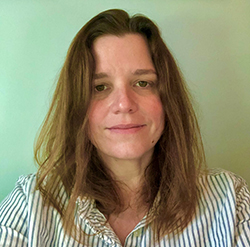 Jessica Reiner, Ph.D., National Institute of Standards and Technology (jessica.reiner@nist.gov)
Jessica Reiner, Ph.D., National Institute of Standards and Technology (jessica.reiner@nist.gov)
Jessica Reiner, Ph.D., is a research chemist in the Biochemical and Exposure Science Group at NIST. She earned her doctoral degree from the State University of New York at Albany in environmental chemistry and toxicology from the School of Public Health. She has worked in determining chemical contaminant concentrations in sediment, water, food, biota, and humans, helping to determine potential exposure pathways, sources, distribution, and fate of these chemicals. Presently, her research is focused on the improvement of analytical measurements of chemicals of emerging concern, mainly fluorinated organic compounds, through the certification of reference materials, methods development, and other quality assurance activities. Dr. Reiner received numerous awards for her work on PFAS measurements in environmental samples and in reference materials currently used by PFAS researchers.
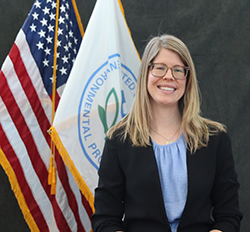 Jacqueline Bangma, Ph.D., U.S. Environmental Protection Agency (bangma.jacqueline@epa.gov)
Jacqueline Bangma, Ph.D., U.S. Environmental Protection Agency (bangma.jacqueline@epa.gov)
Jacqueline Bangma, Ph.D., received her undergraduate degree in Chemistry from The University of Georgia and a Ph.D. from the Medical University of South Carolina. Currently, she is a chemist at the U.S. EPA in Research Triangle Park, NC. Throughout her career, Jackie has investigated the impact and bioaccumulation of per- and polyfluoroalkyl substances (PFAS) in humans and wildlife with a focus on alligators, fish, and the human placenta. Her current work focuses on non-target analysis of novel and emerging PFAS in combination with animal models.
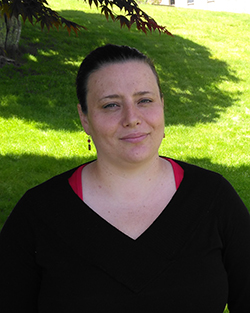 Jitka Becanova, University of Rhode Island (becanova@uri.edu)
Jitka Becanova, University of Rhode Island (becanova@uri.edu)
As an environmental chemist, Dr. Becanova combines her expertise in analytical chemistry and environmental engineering. Her research focuses on emerging environmental contaminants such as per- and polyfluorinated compounds (PFAS), with a particular emphasis on the development of new technologies for their detection and, potentially, for their remediation. Her overall goal is to identify the presence of compounds of concern in the environment and help reduce human exposure.
Moderators:
 Suramya Waidyanatha, Ph.D., National Toxicology Program, NIEHS (waidyanathas@niehs.nih.gov)
Suramya Waidyanatha, Ph.D., National Toxicology Program, NIEHS (waidyanathas@niehs.nih.gov)
Suramya Waidyanatha, Ph.D. is the discipline leader for Chemistry and ADME (absorption, distribution, metabolism and excretion) and oversees the activities of the Chemistry and ADME Resources Group in support of the National Toxicology Program. She designs the research needs in analytical chemistry, ADME and toxicokinetics for chemicals of interest to NTP and facilitates the use of ADME and toxicokinetic data in the design, interpretation, and reporting of NTP toxicity and carcinogenicity studies. She also manages contracts conducting ADME studies, toxicokinetics studies and analytical chemistry activities in support of the NTP toxicity and carcinogenicity studies. She serves as the NTP toxicokinetics faculty chair. Her research interests include: development, validation, and application of analytical methods to quantitate trace analytes in complex matrices; metabolism and disposition of xenobiotics and the kinetic parameters describing these processes in rodents in vivo and rodents and humans in vitro; mechanism(s) of interactions of xenobiotics and/or their metabolites with cellular macromolecules resulting in toxicity.
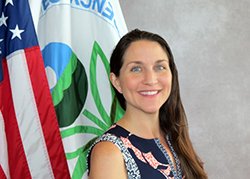 Jean Balent, U.S. EPA Technology Innovation and Field Services Division (balent.jean@epa.gov or 202-566-0832)
Jean Balent, U.S. EPA Technology Innovation and Field Services Division (balent.jean@epa.gov or 202-566-0832)
Ms Balent is on the staff of the EPA's Technology Innovation and Field Services Division where she has worked to collect and disseminate hazardous waste remediation and characterization information since 2003. Ms Balent manages the Clean Up Information Network website and actively supports online communication and collaboration resources available to EPA. She formerly worked with the US Army Corps of Engineers Environmental Engineering Division in the Buffalo District. Ms Balent was also a member of the SUNY-Buffalo Groundwater Research Group where she constructed and tested large scale models of groundwater flow. Ms Balent has also conducted research relating to the Great Lakes, environmental remediation, and brownfields re-development. She holds a Bachelor's degree in environmental engineering from SUNY-Buffalo and a Master's degree in Information Technology from AIU.
Webinar Slides and References:
-
 Slide Presentation for Jessica Reiner, NIST (2.23MB/PDF)
Slide Presentation for Jessica Reiner, NIST (2.23MB/PDF)
-
 Slide Presentation for Jacqueline Bangma, U.S. EPA (4.11MB/PDF)
Slide Presentation for Jacqueline Bangma, U.S. EPA (4.11MB/PDF)
-
 Slide Presentation for Jitka Becanova, University of Rhode Island (5.97MB/PDF)
Slide Presentation for Jitka Becanova, University of Rhode Island (5.97MB/PDF)
Additional Resources:
- Interstate Technology and Regulatory Council PFAS Reference Documents
- NIEHS PFAS Overview webpage
- SRP Public Health Impact Story: SRP Researchers Inform Health-Related Decision Making on PFAS
- SRP Science Digest: Tackling PFAS from Many Angles
Thank you for participating in our webinar. We would like to receive any feedback you might have that would make this service more valuable.
Help & FAQs
- Frequently Asked Questions
- Content Questions?
Call Mali Velasco at 919-794-4708 or mali.velascodelgado@nih.gov - Technical Problems?
Leave us a comment - Cancel Your Registration
- My Participation Records
- CEU Credits and PDHs
Zoom Resources
Before Webinar Day
This seminar will be delivered through Zoom. Participants are encouraged to update to the latest version of the Zoom application for the best experience.
If you are unable to install the Zoom application, most functions will be available if you join just using a modern web browser such as Chrome, Edge or Firefox. We strongly encourage you to run the Zoom Meeting Test prior to attending this webinar. Technical support on the day of the webinar will be very limited and subject to significant delays.
Backup Conference Call
If you cannot participate using online audio, you may join the optional call in line. After checking in for the live event using the instructions listed below, you will see several options to participate. Please click the links in option 4 to follow along by phone and obtain the call in number. If you cannot access the phone number, you may request the call in line from the event moderator in the Q&A or send an email to Jean Balent at balent.jean@epa.gov
Click on "Join Webinar" at the top of this screen, enter your exact first and last name as you registered and enter the number of people attending at your location (including yourself). You should then be taken to the Zoom meeting room. Join with Zoom Application: For those joining with the Zoom application, you may be prompted to sign with a zoom account or join as a guest without signing in.
If joining as a guest, you will be prompted to enter your name and email address. Remember your name, image, video or voice may be visible to others in the live event. When done, click "Join" When it is time for the live event to start, the meeting host will admit you to the live Zoom meeting. Join via web browser (without the Zoom Application): For those joining with a web browser, you may close any pop ups prompting you to download the Zoom app. The next window will allow you to enter your name (first name and last name) and check the box that you are not a robot. Click the blue join button. You may also be asked to provide your email address before joining the room. Remember your name, image, video or voice may be visible to others in the live event. When done, click "Join" When it is time for the live event to start, the meeting host will admit you to the live Zoom meeting. You may need to periodically refresh the browser window to confirm if the host has admitted you. The presenters will control what slide you are viewing. You may submit questions online for the instructors to answer during the webinar by typing in the "Q&A" area. It is not necessary to wait until the question and answer periods to submit questions. At the end of the webinar you will be guided to our feedback form and links to additional resources, including the complete presentation. These links will remain active after the webinar. Provided for your convenience. Importing or accepting the invitation within this iCalendar file is not required, and declining the invitation does not cancel your registration. For additional information on iCalendar, please see our
iCalendar Help It is EPA's policy to make reasonable accommodation to persons with disabilities wishing to participate in the agency's programs and activities, pursuant to the Rehabilitation Act of 1973, 29 U.S.C. 791. Any request for accommodation should be made to at or , preferably one week or more in advance of the webinar, so that EPA will have sufficient time to process the request. EPA would welcome specific recommendations from requestors specifying the nature or type of accommodation needed. EPA welcomes specific recommendations from requestors specifying the nature or type of accommodation needed. Please note that CLU-IN provides both alternate phone call-in options and closed captioning for all webinars, and requests for these specific accommodations are not necessary.
Webinar Day, Checking In
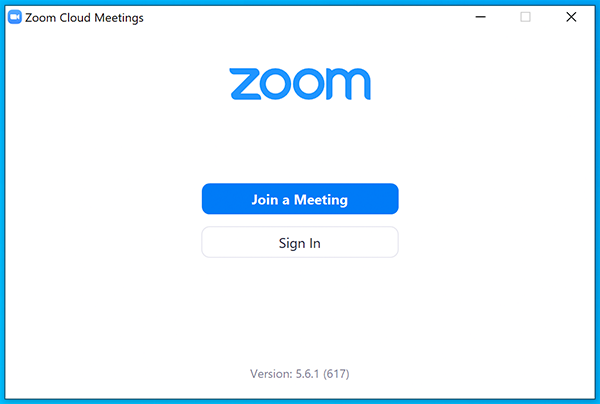

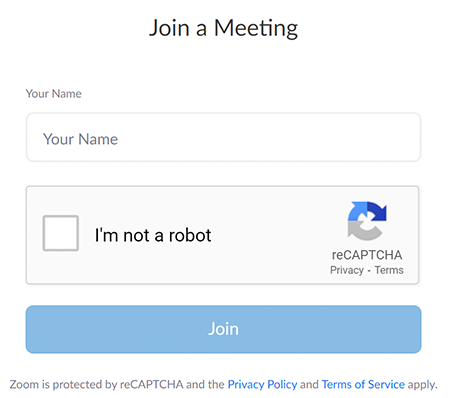
Moving Through Slides
Feedback & Links to Additional Resources
iCalendar File
Rehabilitation Act Notice for Reasonable Accommodation
Rehabilitation Act Notice for Reasonable Accommodation
It is EPA's policy to make reasonable accommodation to persons with disabilities wishing to participate in the agency's programs and activities, pursuant to the Rehabilitation Act of 1973, 29 U.S.C. 791. Any request for accommodation should be made to at or , preferably one week or more in advance of the webinar, so that EPA will have sufficient time to process the request. EPA would welcome specific recommendations from requestors specifying the nature or type of accommodation needed. EPA welcomes specific recommendations from requestors specifying the nature or type of accommodation needed. Please note that CLU-IN provides both alternate phone call-in options and closed captioning for all webinars, and requests for these specific accommodations are not necessary.
Webinar Recording
By participating in this CLU-IN webinar, you automatically agree to authorize recording of audio and visual content presented during this live event and consent to subsequent use of this recording in the public domain by the U.S. Environmental Protection Agency. This recording may include questions, comments and poll responses provided by you during the live event in addition to your name, voice, image or likeness. This recording will be made available after the conclusion of the live event as part of the CLU-IN webinar archives, and will remain available indefinitely. If you do not wish to consent to the recording, please do not join the live event, and contact Jean Balent at 202-566-0832 or balent.jean@epa.gov to discuss your concerns.
Content Disclaimer
This webinar is intended solely to provide information to the public. The views and opinions expressed as part of this webinar do not necessarily state or reflect those of the U.S. Environmental Protection Agency. It is not intended, nor can it be relied upon, to create any rights enforceable by any party in litigation with the United States, or to endorse the use of products or services provided by specific vendors. With respect to this webinar, neither the United States Government nor any of their employees, makes any warranty, express or implied, including the warranties of merchantability and fitness for a particular purpose, or assumes any legal liability or responsibility for the accuracy, completeness, or usefulness of any information, apparatus, product, or process disclosed, or represents that its use would not infringe privately owned rights.

